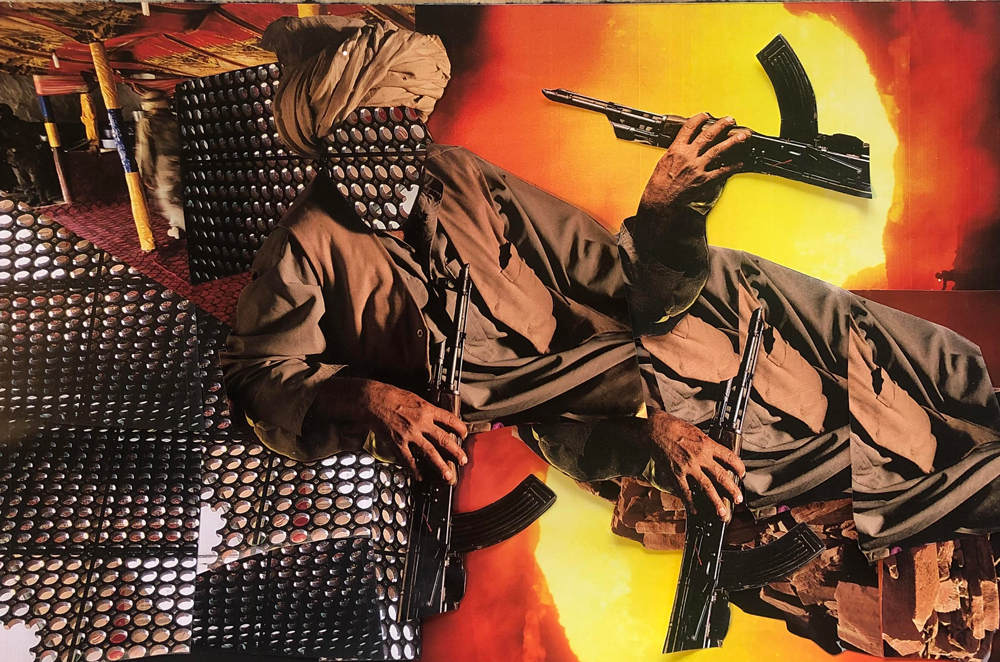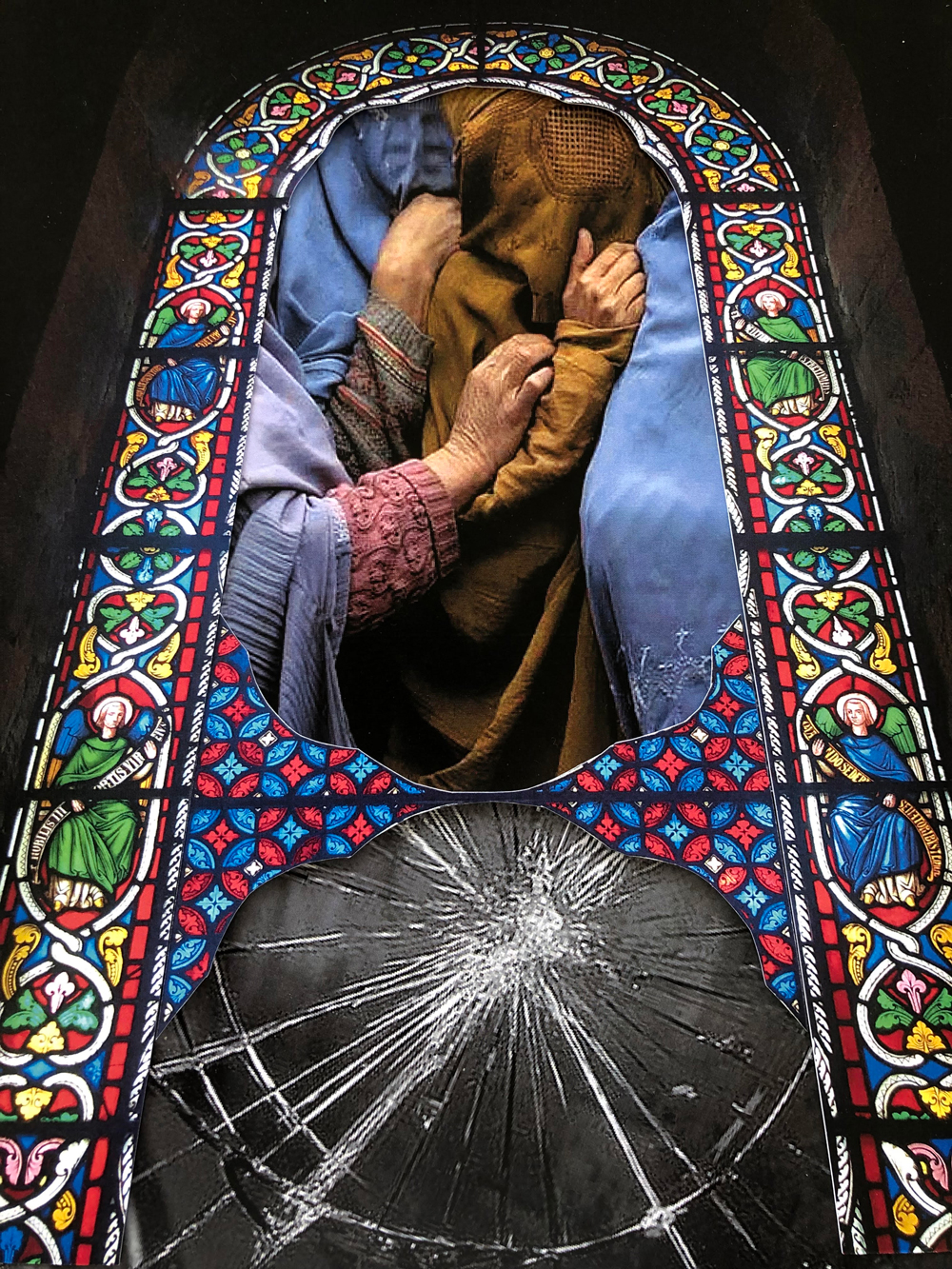



As a Lebanese-American self-taught collage artist, writer, and political analyst, Nola Abboud is deeply influenced by the ever-changing political and social landscape of the Middle East. She writes: “[I] chose to see an opportunity to create art that echoed [my] feelings, experiences, and thoughts about the impact and effects of imperialism, colonialism, and neocolonialism in the Middle East that left the region in an unending state of war over ethnic and religious differences, in parallel with the exploitation of the region’s resources and manipulation of its culture. While doing so, [I] also delved into internal and local dynamics of the region that morphed into deep-rooted problems facing women, and personal freedoms.”
In her series “A Blue World Behind A Net,” Abboud examined the effects on Afghan men and women of the U.S. military withdrawal from Afghanistan in August 2021. Hybrid Monster Taliban uses an image of a Taliban fighter set against a background composed of unstable pillars, explosions, and the exodus of US soldiers. The fighter has been transformed into a hybrid beast of war: extra arms to hold more guns, a net instead of a face skewing his view of the world (similar to how the burkas women are forced to wear obstruct their view), and wholly supported by the destruction surrounding him, which he casually rests on. On the opposite end of the spectrum is Shattered Not Broken, focusing on the Afghan women attempting to protect each other from the viciousness of the hybrid monster. The impact of the attack on women is depicted in the broken glass; however, the glass is only shattered, and not fully broken. Despite the trauma and violence that these women have been forced to undergo, they are nearly saintlike in their ability to endure and find strength in each other under the watchful gaze of religious iconography.